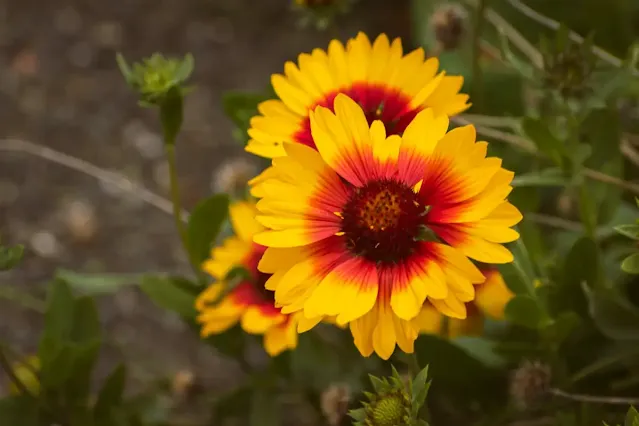The Coreopsis plant brightens any garden with its cheerful yellow flowers and easy-to-grow nature. To keep your Coreopsis plant flourishing and blooming in peak condition, understanding how to water and fertilize it properly is key. This expert guide covers everything from watering schedules to the best fertilizer choices, ensuring your Coreopsis plant thrives season after season.
Understanding the Coreopsis Plant
Overview of Coreopsis Plant Characteristics
Coreopsis, often called tickseed, is a genus of hardy, mostly perennial flowering plants prized for their vibrant, daisy-like yellow or orange blooms. Native to North and South America, Coreopsis plants are well-known for their drought tolerance and ability to attract pollinators like bees and butterflies. The typical growth height ranges from 1 to 3 feet, depending on the species, with bright foliage that complements many garden designs.
Preferred Growing Conditions for Coreopsis Plant
These plants thrive best in full sun and well-draining soil. They prefer moderately fertile, sandy or loamy soil with a neutral to slightly acidic pH. Too much moisture or heavy clay soils can lead to root rot or stunted growth, making it important to monitor soil type and drainage when planting or caring for your Coreopsis.
How to Water the Coreopsis Plant Properly
Ideal Watering Frequency for Coreopsis Plant
For healthy Coreopsis growth, water deeply but infrequently. In general, watering once a week suffices during the growing season, especially if rainfall is scarce. When watering, soak the soil to a depth of about 6–8 inches to encourage deep root development, which supports drought tolerance.
During hot summer months, you can increase watering frequency slightly, but avoid watering daily to prevent waterlogged roots. When newly planted, keep the soil consistently moist until roots establish, typically the first 2–3 weeks. After that, Coreopsis plants easily withstand some drought.
Signs of Overwatering and Underwatering Coreopsis
Overwatered Coreopsis may show yellowing leaves, soft stems, and poor flower production, while underwatered plants often appear wilted with dry, brown leaf edges. Monitoring these signs helps you adjust watering before serious damage occurs. Mulching around the base can also keep soil moisture steady and reduce evaporation.
Topics Related to Coreopsis Plant:
Fertilizing Your Coreopsis Plant for Optimal Growth
Best Types of Fertilizer for Coreopsis
Coreopsis plants generally thrive without heavy feeding, but light fertilization supports robust blooms and lush foliage. Balanced fertilizers like a 10-10-10 (N-P-K) or bloom-boosting formulas higher in phosphorus (e.g., 10-20-10) work well. Slow-release granular fertilizers applied in spring supply nutrients steadily through the growing season.
Organic options such as compost, well-rotted manure, or fish emulsion provide gentle nutrition and improve soil health over time. These organic fertilizers are great for gardeners wanting natural options to enhance Coreopsis growth.
When to Fertilize Coreopsis Plant
Apply fertilizer in early spring after new growth starts and again mid-season if blooms seem sparse. Avoid late-season fertilizing to prevent tender new growth that won’t harden off before winter. For best results, incorporate fertilizer lightly into the soil around the base without directly contacting stems or leaves.
DIY Organic Fertilizer Options for Coreopsis
For a nutrient-rich organic boost, mix one part fish emulsion with five parts water and apply as a foliar spray or soil drench once a month during growing season. Compost tea and diluted seaweed extract also provide trace minerals and growth-promoting compounds that benefit Coreopsis plants naturally.
Additional Tips for Coreopsis Plant Care
Soil Preparation and Drainage for Coreopsis
Before planting, improve soil drainage by mixing in organic matter such as compost or coarse sand. Raised beds or mounds can help prevent standing water, which Coreopsis dislikes. Testing soil pH and texture ensures the environment suits your Coreopsis’ needs, so consider amendments if the soil is heavy or overly alkaline.
Enhancing Coreopsis Bloom through Proper Care
Deadheading spent flowers encourages continuous blooming throughout the season. Removing damaged or diseased leaves also directs energy to healthy growth. Additionally, spacing plants adequately—about 12 to 18 inches apart—improves air circulation, reducing risk of pests and diseases that might hinder flowering.
Topics Related To Planting Flowers:


